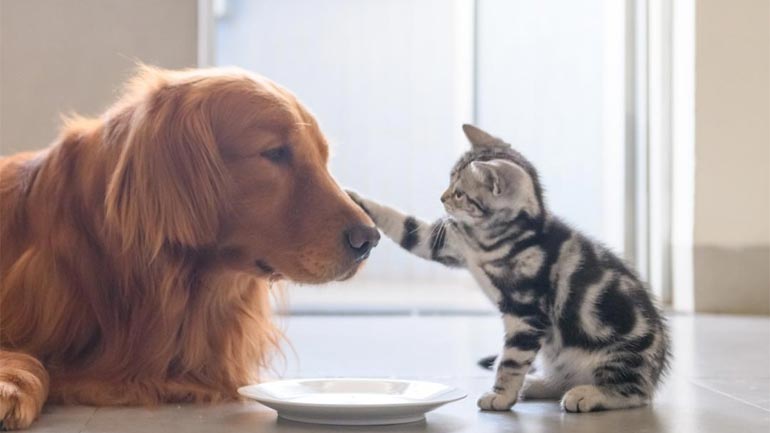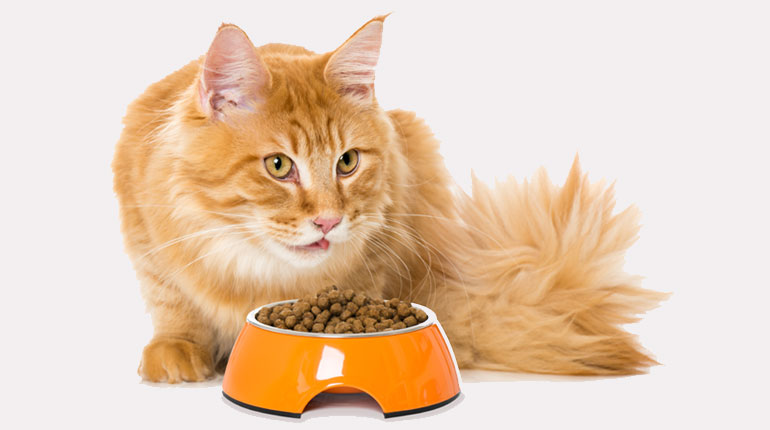
It’s important to think of every member of the family when it comes to setting up and maintaining your home, and that includes your pets. Whether you’ve just got your first pet or you’ve acquired a new family member, it’s vital to make sure your house is not only comfortable and welcoming but also safe and secure. And don’t forget to consider your pet’s health and happiness when making renovations – a little planning and know-how go a long way. Giving your furry (or feathered, or scaly) friends a safe and stimulating space to eat, play and sleep means that you can have peace of mind and enjoy your time together in your home. Here are some points to consider.
Pet’s eye view
The best place to start when it comes to making your home pet friendly is to look at the world from their point of view. Look at the different rooms in the house from the height of your dog or cat – you’d be surprised at the amount of trouble they could get themselves into. Think about the places a pet could access by climbing or jumping – these areas need to be vetted (excuse the pun) and made either safe or inaccessible to a curious pet.
Wires and cables
Lots of cats and dogs (and rodents) will chew through wires if given the chance, with results varying from inconvenient (phone cables) to fatal (electrical cables). As well as the dangers of chewing through them, if the pet actually ingested any of the wire or cable it could make it ill. Dogs and cats can get tangled – and even strangled – by chaotic cabling, so make sure you keep your cables tidy and inaccessible, and if that isn’t possible invest in a cable protector.
Plant safety
Having plants around the house creates a nice vibe, but it’s important to remember that dogs and cats will chew and eat plants from time to time, and some varieties can be toxic, and some even lethal for pets. It’s best to completely eradicate any poisonous plants from your home. There are plenty of resources online to help you determine pet-safe plants, or you can check at your local garden center when you’re purchasing them. Remember that this applies to plants and flowers in the garden as well as houseplants.
Harmful substances
The chances are your dog or cat will be mostly accommodated in and around the kitchen. Most people keep cleaning fluids and chemicals in a cupboard under the sink – this must be very secure or located up high out of harm’s way. Any medicines should be stored up in a cabinet in the bathroom or kitchen to prevent a curious pet from finding and consuming them. In the garden, make sure that weed killers and chemical fertilizers are locked away in the shed, and keep antifreeze and other harmful or corrosive liquids stored out of reach in the garage. Keep your toilet lid down – cats love to drink from toilets and harmful chemicals can cause serious health problems.
Pet zones
Just as we like to retreat from time to time to our bedrooms or other personal space, pets need a place of their own where they feel safe and quiet. A comfortable bed for sleeping should be kept a reasonable distance away from litter trays – and these should be placed somewhere private but not isolated. If a cat doesn’t feel comfortable in its litter tray the chances are they won’t use it. If you’re landscaping your garden bear your pets in mind – dogs need secure fencing but prefer to be able to see out. Cats love a sunny, private spot to relax and sunbathe.
Trash
It’s wise to invest in trash cans that have lockable lids – firstly to prevent any mess if they get rifled through or knocked over – but also to keep your dog or cat healthy. Food waste such as chicken bones can be dangerous, causing splinters that harm the digestive system and can have more serious consequences. Fruit cores and stones can be choking hazards, and some fruits, vegetables, and other items are poisonous for dogs – raisins and grapes can cause kidney failure, and chocolate, coffee grounds, and Xylitol (contained in sugar-free goods) are also highly toxic.
Flooring
This can be a tricky area – carpets and animals don’t mix well. Carpets get stained, covered in fur, ripped up, and tend to hold bad aromas. Wood flooring is a better option in terms of hygiene, but if your dog likes to run around the house be sure to place some rugs at strategic points so that he or she doesn’t slip. Wood floors can also get scratched by claws. Lino and vinyl can be chewed up but is cheap to replace and easy to clean.
Before you introduce your pet to your home make sure the space is safe and stress-free. Your pet is a family member, and the more secure they feel, the happier you will all be.




